What Explains The Great GAY Divergence?
Imagine a world where love knows no boundaries, where two people can marry regardless of gender. In some parts of the globe, this is reality. In others, it's not just repulsive – it's illegal and dangerous. This stark contrast reflects “The Great Gay Divergence”.
Thirty years ago, less than 30% of Americans supported same-sex marriage. Today, that figure has skyrocketed to 69%. That is extremely rapid cultural change in favour of love and liberalism. But most of the world is not joining the parade. When asked about their least desired neighbours, most Africans and Asians still say “homosexuals”.
The roots of this divergence go back two thousand years. Some parts of the world culturally evolved to celebrate marital love and secular liberalism. Shaking off the shackles of sexual puritanism, activists could persuade wider publics to welcome diversity, for ‘love is love’. Patrilineal societies have been far less receptive, as they prioritised intergenerational loyalty, and actually suppressed romance.
In Russia, the legacy of the Gulag system and contemporary prison violence have institutionalised homophobia, associating male-male sexual contact with extreme degradation. In the Caribbean, the brutal history of plantation slavery may have similarly sown seeds of shame, where emasculating violence was used as a tool of control and punishment. Religious revival is another major impediment, exemplified by Brazilian Evangelicals, fanning the flames of homophobia.
So, for those curious, here’s a little preview of my forthcoming article, “The Great GAY Divergence”:
The long road to sexual equality:
Marital monogamy in Ancient Rome and the Protestant Reformation
Secularisation
Activism
The power of TV!
The drivers of homophobia:
Degrading brutality in slave plantations, prisons, and penal colonies
Religion
Political competition
(This is a live document, I’ll keep updating it with new evidence).

Filial Piety vs Romantic love
In the Middle East, North Africa, and Central Asia, kinship is patrilineal (tracing the male line). Sons are socialised to respect and provide for their parents in old age. Marriage is certainly necessary (for reproduction of the male line), but it also poses a major threat, dividing a man’s loyalty. A man who adores his wife may neglect his parents. To prevent this threat, romantic love may be sabotaged and suppressed.
By contrast, North Americans, Latin Americans and Europeans tend to celebrate romance, and marry for loving companionship.
This divergence goes back two thousand years.
How Europeans Came to Celebrate Love
To understand contemporary culture, we need to go back over two thousand years…
Ancient Rome
The Roman Republic was initially patrilineal and patriarchal. Descent was traced down the male line, solidifying fraternal loyalty. Civil and political rights were the preserve of male household heads (pater familias). He had powers (patria potestas) over his children, his wife (manus), and his slaves (dominica potestas). Manus endowed him with the authority to put her to death for adultery (or drinking alcohol). Compliant women were respected, while dissidents were shamed and sullied.
Romans and Greeks differed from other civilisations in one important respect. As Classist Walter Scheidel explains, they idealised marital monogamy*. Polygamy was seen as downright ‘barbaric’.
*Though to be clear, this was not reinforced by stipulations of male love, loyalty or sexual fidelity. A patrilineal Roman was perfectly free to rape and molest slave concubines.
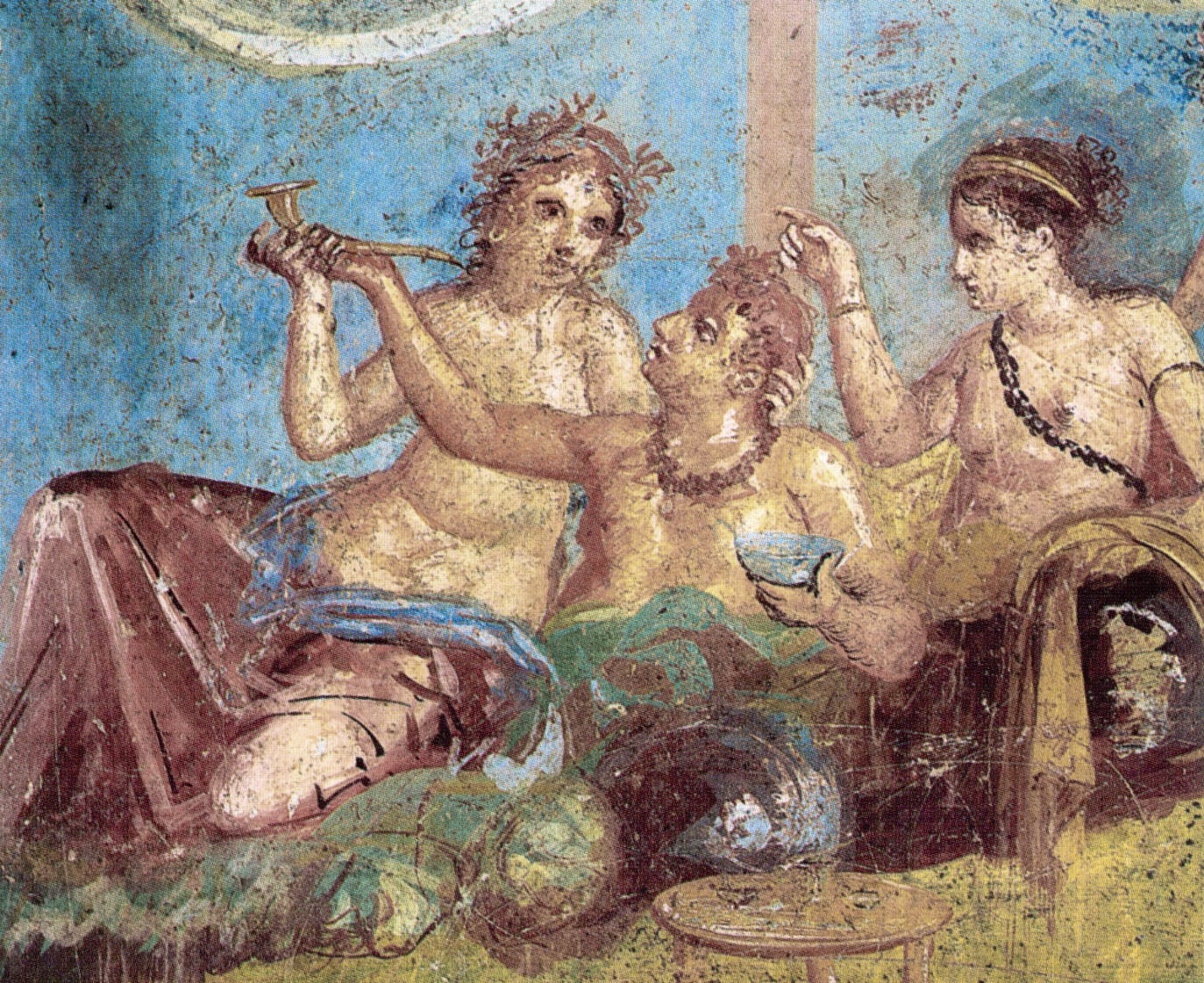
Christianity and the Rise of Nuclear Families
Christianity spurred cultural and legal changes. Marriage was now supposed to be a conjugal partnership. Paul upheld a reciprocal relationship between husband and wife,
The husband must give the wife what is due to her and the wife equally has to give the husband his due. The wife cannot claim her body as her own; it is her husband’s. Equally, the husband cannot claim his body as his own; it is his wife’s
(1 Corinthians 7:3-8)”.
Marriage came to be idealised as a voluntary relationship between two people, beginning with affectio maritalis (the desire to be husband and wife). Christians were expected to be sexually faithful (“thou shalt not commit adultery”). Sexual monogamy became normative: in 5th Century CE, Augustine called it a “Roman custom”. Legally, Rome shifted from being patrilineal to bilateral: a mother’s relationship with her children was recognised by law, allowing her to inherit from them.
From 300-1300 CE, the Roman Catholic Church and Carolingian Empire stamped out cousin marriage and polygamy. Even before the Black Death, English peasants disregarded lineage and rarely exchanged work with extended kin (as revealed by Barbara Hanawalt’s fantastic analysis of coroners’ reports).
Young men and women could only marry once they had save up enough money to establish nuclear households. Nuclear household’s vulnerability necessitated married women’s continued employment. Husbands seldom objected. Trusting their wife’s competence, men bequeathed land and family affairs to her control. Couples cooperated, as a conjugal unit. Wage labour was thus widespread. Precociously deep wage labour markets and urbanisation broke up kinship and accelerated exogamy.
The Protestant Reformation
The Protestant Reformation promoted a major shift in psychologies - argues Joseph Henrich. Whereas Catholics deferred to religious authorities, Protestants were supposed to interpret the Bible for themselves. This ideology of ‘sola scriptura’ motivated increased literacy, as well as impartial pro-sociality.
Martin Luther also glorified something else (which Henrich curiously omits), but may have also weakened fraternal loyalty. 16th century sermons increasingly emphasised marital love and intimacy - details Stephanie Coontz. Church of England wedding ceremonies began with words that you may find familiar:
“Dearly beloved, we are gathered together here in the sight of God, to joyne together this man and this woman in holy matrimony, which is an honorable state, instytuted of God in Paradise”
Weddings ended with the husband saying,
“With this ring I thee wed: with my body I thee worship; and with all my worldly goodes, I thee endow”.
By the 17th century, churches actually criticised husbands for showing insufficient love. English Puritan Robert Cleaver maintained that a husband should not treat his wife like a servant, but act in a way that would “rejoice and content her”.
OK. But those are just ecclesiastical authorities. Were these attitudes actually embraced by the wider public?
Did Men Love their Wives? Big Data from the Dead
Economic Historian Neil Cummins has a fascinating new project analysing English wills over the past 600 years! Ever demanding, I sent him an email:
I have an idea, could you look in your data set on wills at terms of affection? Is there a shift in men being more loving to their wives?
What does he find? Over the 17th and 18th century, men referred to their wives much more positively!
Excited, but sceptical, I asked another question:
“But were people just becoming generally more sentimental? Is there a difference in affection to sons, daughters, dogs..”
Brilliant Neil sent me another graph. English men became especially sentimental towards their wives! They cherished romantic love!!
BRAVO NEIL CUMMINS!!
European, North and South American dances centred on romantic couples
In Aboriginal, Asian, Native American, African, and Southeastern European cultures, the focus of dancing is on the collective group or religious festival. Among hunter-gatherers, men may dance while entering trance, while women provide the music. Women may also have their own dances - associated with menstruation. Dance also functioned as a mating display: such as the Maasai moran leaping dances to impress the girls.
European, North and South American dances, by contrast, revolved around a romantic couples. Styles varied - from the lively Galliard and Allemande to the graceful Minuet, the jolly Gavotte, and the lively Mazurka - but all focus on mutual attraction. This reflects the cultural primacy of marital love.


Romantic love is not a sufficient condition for gay tolerance. Indeed, 1970s USA celebrated romantic love yet remained deeply homophobic. Another really important catalyst of contemporary support for same-sex marriage was…
The Secular Enlightenment
Sexual morality was strictly policed by Christianity, Confucianism, Hinduism, Judaism and Islam. Respectability required chastity, while deviants were shamed. To prevent sinful lust, women’s bodies were to be covered. Widespread conformity was motivated by religious convictions, as well as fear of social condemnation and state persecution.
Governments censored sexually explicit art and ideas in order to shore up religious legitimacy. The Spanish Inquisition burnt thousands of books, prints, and paintings deemed sexually immoral. Over the 17th and 18th century, at France’s Académie Royale de Peinture et du Sculpture, naked female models were forbidden. The state continued to arbitrate which art could be shown publicly, and prosecuted impropriety
The Secular Enlightenment emerged through struggle - a battle between campaigns for public decency versus individual liberty. Relentless organising by secular political movements ultimately secured institutional reforms and shifted ideological expectations. From the late 17th century, European societies of philosophers, politicians and artists increasingly championed freedom, reason, science, and secular progress. Secular political movements became increasingly organised and emboldened.
Churches and clergy lost legitimacy: French wills became increasingly secular. Requests for requiem masses, bequests, offerings and invocations of the Virgin Mary also plummeted. This wave of anti-clericalism culminated in the French Revolution, which celebrated freedom of expression.
The French Penal Code of 1791 abolished a 'crowd of imaginary crimes' including sodomy, sacrilege and blasphemy. As ecclesiastical authority waned, religious institutions were less able to regulate sexuality and reproduction.
The Americas were more religious and slower to embrace secularism. The US Comstock Laws of 1873, which prohibited the transport of materials that were "obscene, lewd, or lascivious". A New York gallery owner was duly charged for trading nudes prints. Over the 1970s and ‘80s, Chile's dictatorship censored sexually provocative films to secure support from religious conservatives.
Though behind Western Europe, the U.S. and Latin America ultimately became much more secular. This provided the crucial ideological and institutional foundations for gay marriage.
The Spirit of ‘68
Building on these secular foundations, the 1960s Counter-Culture championed their own ideas of social justice. Protests erupted against the Vietnam War; while Rock and Roll music celebrated a spirit of rebellion; and people got loose on recreational drugs.
This culture of youthful resistance was enabled by job-creating economic growth, universities, democratisation, and secularism. Students didn’t just have time and economic autonomy. The Church had lost legitimacy.
In Zurich, I interviewed a leading Swiss activist (now elderly). For her cohort, ‘68 marked a new era of secularism, liberal tolerance, individual rights, independent critique, and a growing belief that change was possible through mass mobilisation.
Feminist activists shouted, ‘my body, my rights’. In consciousness raising groups, marches and art collectives, they rebelled against patriarchal expectations. They demanded sexual autonomy.

The Power of TV!
Not everyone was on board with ‘free love’. In 1990, most Americans opposed same-sex marriage. Likewise in Australia, Mrs McNicol wrote into the Daily Telegraph, complaining about the ‘sleaze march’.
TV sitcoms played a crucial role in making viewers more comfortable with homosexuality. As part of their battle for ratings, US television producers increasingly introduced scandalous content, which got tongues wagging..
Sitting comfortably in their living rooms, watching their favourite shows, viewers watched familiar protagonists embrace gay friends. In the US TV show “Soap”, characters reflected, learnt and embraced more liberal values. In “All in the Family”, Archie Bunker, a working-class patriarch, initially reacted with disbelief when his friend Steve came out as gay. Over time, Archie's perspective shifted, challenging his preconceptions. Other television shows similarly depicted nice, relatable, family-orientated people being friends with gay men.

Gay Pride
Activism has been a hugely important part of gay liberation. Magnificent marches show that queers needn’t feel alone or afraid: masses will welcome them with open arms. Organising has fostered community, solidarity, inclusion, and anti-discriminatory legislation.
Gay Pride has now been institutionalised in many cities, coinciding with Stonewall Riots. This reflects support from both the wider public and government.
“Love is Love”
Many books have been written on the gay rights movement in Europe, Australia, the US and Latin America. However, by narrowly focusing on these specific case studies, they omit a really important underlying cultural value: the celebration of romantic love.
“Love is love”/ “amor es amor” were major slogans of the gay rights movement. When Washington activists mobilised for gay marriage, they officially adopted the song, “Same Love”.
Activists were emphasising something that Western societies already cherished: romantic love. Campaigners sought to persuade their compatriots that ‘love is love’ - whether expressed by straights or queers.
“Amor es Amor” by Mexican musician Juan Gabriel glorifies the importance of love, in all its forms:
“Love is love
Amor es amor
The biggest thing in the world there is
Del mundo lo más grande que hay
Love is love
Amor es amor
It never has an end
No tiene final jamásA thousand poets have already said it
Ya lo han dicho mil poetas
In the most beautiful verses
En los versos más hermosos
That love is what reigns in every being
Que el amor es el que reina en cada ser
In every being that has a heart
En cada ser que tiene corazónLove is love
Amor es amor
The biggest thing in the world there is
Del mundo lo más grande que hay
Love is love
Amor es amor”.
Gay rights only gained popularity, I suggest, because Western societies already celebrated secular liberalism and romantic love. Conversely, homophobia persists in places that are deeply religious.
Religosity reinforces homophobia
All the major world religions were sexually puritanical and homophobic. A major aspect of global variation is the extent of religosity - e.g. Brazilian Evangelicals, Thai Buddhists and British Muslims.
Brazil’s Evangelicals
Brazil has seen a boom in evangelical churches, which castigate homosexuality, tried to ban ‘gender ideology’ and opposed legislation for equality.
As the rest of the country secularises, social conservatism is contested. Just last year, Brazil’s Supreme Court ruled that homophobia is a slur akin to racism. Laws are no panacea, of course. What really matters, for the future of gay and lesbian Brazilians is whether their compatriots become more or less religious.
Sub-Saharan Africa
Sub-Saharan Africans tend to strongly oppose homosexuality. This may hark back to the spread of Christianity and Islam, without subsequent secularisation.
In recent years, the political saliency of LGBT issues has been increasing unevenly across Sub-Saharan Africa. Guy Grossman suggests this is because political parties invoke religious proscriptions in order to gain wider legitimacy in elections.
Grossman emphasise two key factors:
The rapid growth of Pentecostal, Evangelical, and related Renewalist Christian churches (which are especially homophobic), and
Democratisation processes leading to heightened political competition.
Politicians, especially incumbents, arguably find LGBT issues attractive because they offer a way to gain religious legitimacy, can mobilise voters through religious organisations, and are relatively easy issues to communicate and debate.
Grossman finds that LGBT saliency increases with a country’s population share of Renewalist Christians, and this effect is stronger in countries with higher levels of political competition.
Conservative Backlash?
Updating Grossman’s research, let me add that some African leaders have stepped up their condemnation of homosexuality. Last year, Ugandan president, Yoweri Museveni, hosted an inter-parliamentary conference on “family values and sovereignty”, with representatives from 22 African countries. The event was promoted by the African Bar Association. Museveni declared,
“Africa should provide the lead to save the world from this degeneration and decadence, which is really very dangerous for humanity. If people of opposite sex [sic] stop appreciating one another then how will the human race be propagated?”
Museveni has also introduced an anti-homosexuality bill, which mandates a life sentence for “the offence of homosexuality”. In Kenya, Peter Kaluma MP has proposed a Family Protection Bill’, explicitly targeting LGBTQ+ funding or activities. Ghana’s parliament has just passed a new law that carries a prison sentence for up to three years for anyone convicted of identifying as LGBTQ+.
Speculatively, I wonder if this reflects conservative backlash to progressive discourses which are now globally visible (such as the opening ceremony of the Olympics). Google Trends data suggests a rise in searches for ‘LGBT’, especially in Kenya and Ghana.
Russia
Russians’ intense homophobia may have been worsened by Stalin’s Gulags, suggest Maxim Ananyev and Michael Poyker. In the Gulag system, a strict hierarchy emerged among prisoners, enforced through violence and sexual abuse. At the bottom of this hierarchy were the ‘petuhi’ (roosters), who were systematically raped and abused. This was a codified system of degradation:
Forced feminisation: ‘Petuhi’ were often forced to take on feminine names and perform traditionally female tasks, cementing their status as ‘not men’.
Ritualised rape: New arrivals or those who broke prison codes could be subjected to gang rape as a form of initiation or punishment.
Contamination rules: Any physical contact with a ‘petuh’ could result in an inmate being demoted to that status, creating a system of extreme social isolation for victims.
Guard complicity: Camp administrations often turned a blind eye or even encouraged this system as a way of maintaining control.

This system created a powerful association between male-male sexual contact and extreme degradation, shame, and loss of masculinity. As 60 million men cycled through the Gulag system, these attitudes spread.
Areas more exposed to the 1953 amnesty of Gulag prisoners show higher levels of homophobia today. Importantly, they find more crimes against gay men but not lesbians (which is consistent with punishment in prisons, rather than religious proscriptions). Also, the dispersal of prisoners did not change local sex ratios.
Ananyev and Poyker conclude that,
(i) family members of people who went through Gulag camps are more homophobic than others even when we control for the socio-economic and demographic factors;
(ii) exposure to amnesty also affected the preferences of people living in those locations that listen to prison life romanticization music;
(iii) and that the effect of the amnesty is largely mediated by the number of thieves-in-law coronations that embody the quintessence of prison culture.
Thus we conclude that the amnesty of 1953 increased intolerance toward gay persons through the spread of prison cultural norms.
Building on Ananyev and Poyker, I suggest that prison violence continues to perpetuate homophobia. Recent exposés have revealed widespread torture and sexual abuse in Russian prisons. In 2012, Sergey Savelyev, a former prisoner, leaked 40 gigabytes of prison videos and photos depicting systemic rape, ridicule, and beatings.

Putin's government has further institutionalised homophobia, positioning Russia as a defender of traditional values against a supposedly degenerate West. This has led to the extension of ‘gay propaganda’ laws and increased hate crimes against LGBT individuals.
The Russian case suggests that homophobia isn’t an inevitable reaction to male-biased ratios, but rather a function of institutionalised torture under incarceration.
Now let’s now consider how these factors - male-biased populations, religion, and sexual violence as punishment - may have contributed to homophobia in the Caribbean.
The Caribbean
From the 17th to 19th centuries, Caribbean sugar plantations relied on enslaved African labor. Plantation owners and overseers used a variety of brutal methods to control the enslaved population and maximise labor output. This system of slavery may have shaped contemporary attitudes towards homosexuality.
Punishments included whipping, which was often administered publicly to instill fear in other slaves. Some plantations had dedicated ‘punishment books’ detailing the whippings and other tortures inflicted on enslaved people. More severe punishments included mutilation, branding, and prolonged confinement in stocks or dungeons.
Slave rebellions were met with particularly harsh reprisals. Following the 1760 Tacky’s Rebellion in Jamaica, captured rebels were burned alive or gibbeted (left to die in iron cages). Even after the official abolition of slavery, the apprenticeship system (1834-1838) maintained many of these coercive practices.
Slave owners may have also degraded men through sexual punishment. In an article in the Jamaica Observer, John Hardy wrote:
"The black slaves and most of their descendants developed this hatred for homosexual activities because of the painful experiences that their forefathers endured during slavery.
It is alleged that if and when a white slave master suspected that black male slaves were showing any sign of resistance to their enslavement, the most cruel and brutal treatment would be meted out to them. One such treatment would be sodomisation."
This practice was not unique to the Caribbean. On U.S. plantations, sexual violence against enslaved men may have been used as a tool of domination and emasculation. In "Incidents in the Life of a Slave Girl”, abolitionist Harriet Jacobs alluded to a crippled slave-master (named Luke) meting out sadomasochistic punishment:
“The fact that he was entirely dependent on Luke’s care, and was obliged to be tended like an infant, instead of inspiring any gratitude or compassion towards his poor slave, seemed only to increase his irritability and cruelty. As he lay there on his bed, a mere degraded wreck of manhood, he took into his head the strangest freaks of despotism; and if Luke hesitated to submit to his orders, the constable was immediately sent for.
Some of these freaks were of a nature too filthy to be repeated. When I fled from the house of bondage, I left poor Luke still chained to the bedside of this cruel and disgusting wretch”.
In his new book, “Rethinking Rufus: Sexual Violations of Enslaved Men”, Thomas Foster draws on a range of sources (newspapers, court records, slave owners’ journals, abolitionist literature, former slaves’ testimony) to suggest that enslaved black men were sometimes sexually violated.
When enslaved men were sold, their bodies were often stripped and scrutinised. Once deployed in coercive plantations, men were publicly humiliated and emasculated. In his 1862 account of enslavement in South Carolina, John Andrew Jackson details:
“On one occasion I saw my brother Ephraim tied up and blindfolded with his own shirt, and beaten with fifty lashes before his own wife and children, by a wretch named Sam Cooper, because he was falsely accused of having stolen a yard of bagging.”
“Fathers! think of being tied up and stripped before your wife and children, and beaten severely for nothing at all; and then think that it is a daily, nay, hourly, occurrence in the Slave States of America, and you will begin to have some idea of what American slavery is.”
Men were not only tortured, but publicly stripped and degraded in front of the wider enslaved community. Slavers and overseers sometimes intentionally injured men’s genitals. In Maryland, one African American detailed that after a severe beating with a hickory paddle, his ‘privates were very much injured and swollen very large’. Whipping was sometimes so severe that it pained men to redress. In 1853, a ‘Louisiana overseer nailed an enslaved man’s penis to a bedpost as part of his punishment’.
Sadomasochism was extreme. Enslaved men were sometimes psychologically tortured through forced participation in sexualised punishment, such as being compelled to defecate in another man’s mouth, or castrate another. As Orlando Patterson has famously argued, this was ‘social death’. At every step, men were degraded.

While direct documentary evidence of sexual violence against enslaved men is limited, the historical record clearly demonstrates plantation slavery frequently included rape of enslaved women, forced breeding, and various forms of physical torture.
Given slave owners’ the totalitarian control, pervasive violence and routine humiliation, it is possible this also included anal rape. The paucity of written records may be due to extreme stigma and the scarcity of slave narratives.
I hypothesise that sexual abuse of enslaved men may have been especially pervasive in Caribbean plantations, which were majority male. Since women were scarce, enslaved men may have been used as sexual substitutes. The possibility of this degrading form of torture loomed over all enslaved men, creating a pervasive atmosphere of fear and shame associated with male-male sexual contact.
Degrading, emasculating sexualised violence in male-majority plantations may have fomented shame. These may have been reinforced by the subsequent growth of churches.
Dancehall Music
Dancehall, a genre dominated by young male artists, now revs up violent homophobia:
“Lick a shot inna a battyman head! Lick a shot inna a lesbian head! All sodomite dem fi dead, all lesbian dem fi dead” (Capleton, 1990).
“It's like boom bye bye inna batty bwoy head. Rude bwoy nah promote no nasty man, dem haffi dead” (Buju Banton, it’s specifically aimed at paedophilia, but this is often conflated with homosexuality)
“When yuh hear a Sodomite get raped/but a fi wi fault/it's wrong/two women gonna hock up inna bed/that's two Sodomites dat fi dead” (Elephant Man)
“I'm dreaming of a new Jamaica, come to execute all the gays” (Beenie Man)
“Bun a fire pon a kuh pon mister fagoty, ears ah ben up and a wince under agony, poop man fi drown a yawd man philosophy” (Babycham and Bounty Killer)
Far from being shunned, these songs are massive hits. “Chi Chi Man,” about killing and burning gay men, was the Jamaican Labour Party’s 2001 theme song.
The Muslim World
Muslims tend to be especially religious. The vast majority pray frequently, read the Quran daily, attend mosque weekly, and support Sharia. The only exceptions are formerly communist countries, where religion was brutally crushed.
Muslims also tend to be homophobic. 94% of Egyptians say it is ‘morally wrong’.
Within India, the vast majority of all religious groups express strong homophobia. Animosity is highest amongst Muslims.
75% of Turkish people explicitly say that they do not want neighbours who are homosexual. Deviance has also been stamped out by a (democratically elected) religiously conservative government. Pride has been banned since 2015. Activists have been detailed. In 2021, the Turkish government withdrew from the Istanbul Convention, which provided a legal framework to combat violence against women, as well as people who are lesbian, bisexual, trans, or intersex
Last year, Istanbul’s governor said police detained 113 people attending the Pride March.

In rich countries, Muslims are still homophobic. An IPSOS Mori poll finds that 52% of British Muslims disagree that homosexuality should be legal in Britain.
Thailand’s legalisation of same-sex marriage reveals the importance of secularisation
Thailand’s Senate has just voted to legalise same-sex marriage. Neighbouring Malaysia and Indonesia are much more homophobic. This cultural difference is primarily due to religion and religiosity: Buddhists are more gay-friendly, and Thai Buddhists have secularised. Combine those two and you get legal gay marriage.
The Great GAY Divergence
The battle for same-sex marriage was definitely not won overnight, nor was it inevitable. It was a probabilistically rare event, deeply contingent on iterative cultural evolution. The roots of this global divergence go back two millennia, from Ancient Rome's monogamy to the medieval Western Church's meddling, from the Protestant Reformation's glorification of marital love to the Enlightenment’s secularism and the Sexual Revolution's subversion. It’s been a very long road to sexual equality.
However, this journey towards acceptance was not universal. In Russia, the legacy of the Gulag system and contemporary prison violence have institutionalised homophobia. In the Caribbean, the brutal history of plantation slavery may have sown seeds of shame and degradation associated with male-male sexual contact. These historical traumas, combined with religious conservatism and political exploitation, have created stark regional differences in LGBTQ+ acceptance.
Importantly, the Protestant Reformation alone was no friend of free love. Societies only liberalised if they also tore off the shackles of sexual puritanism and then secularised. Lest we forget, US Evangelicals promoted homophobia in both Uganda and Brazil.
'The Great GAY Divergence' will dive into these dynamics, incorporating new qualitative research from around the world. Buckle up.







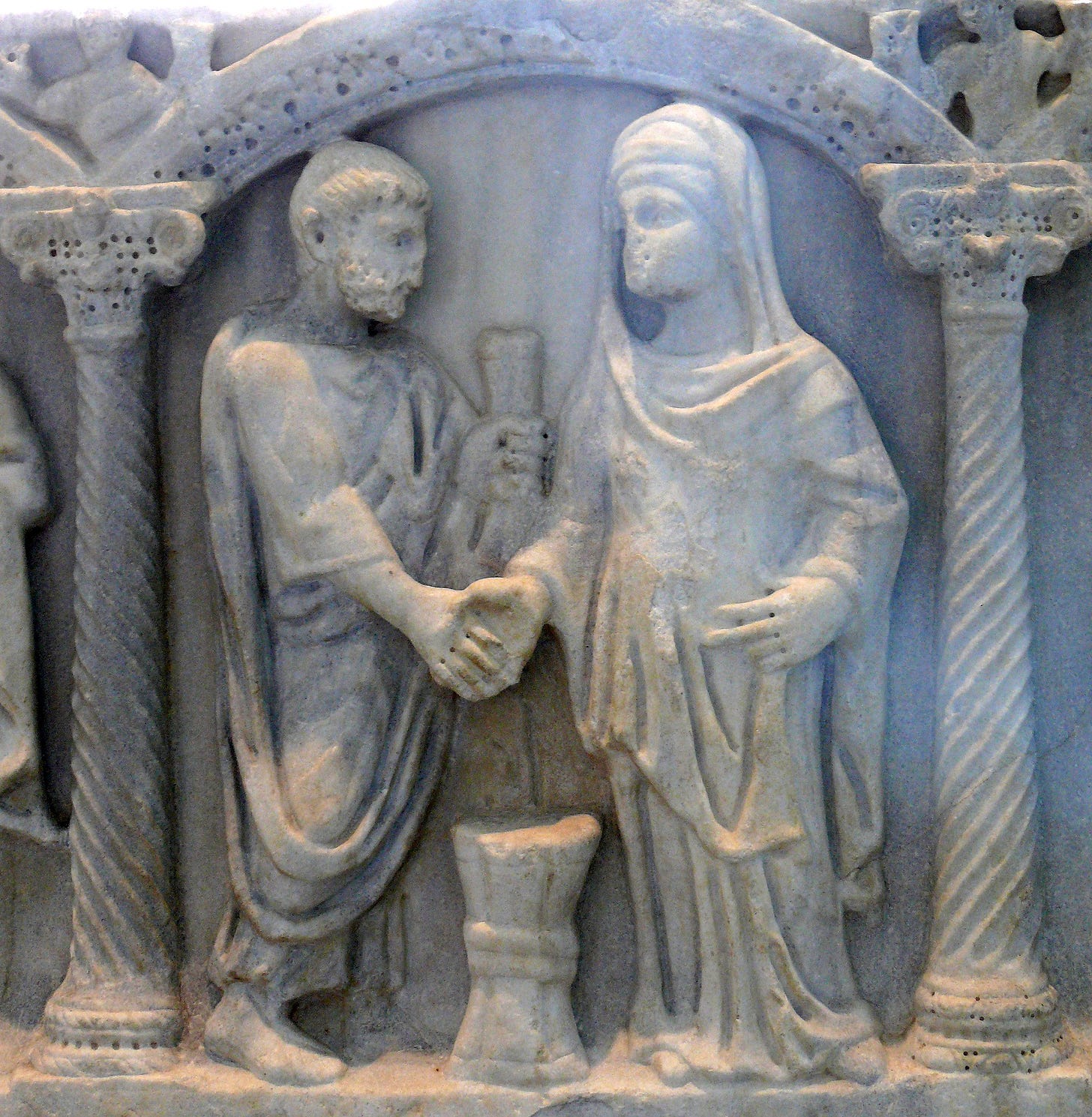


















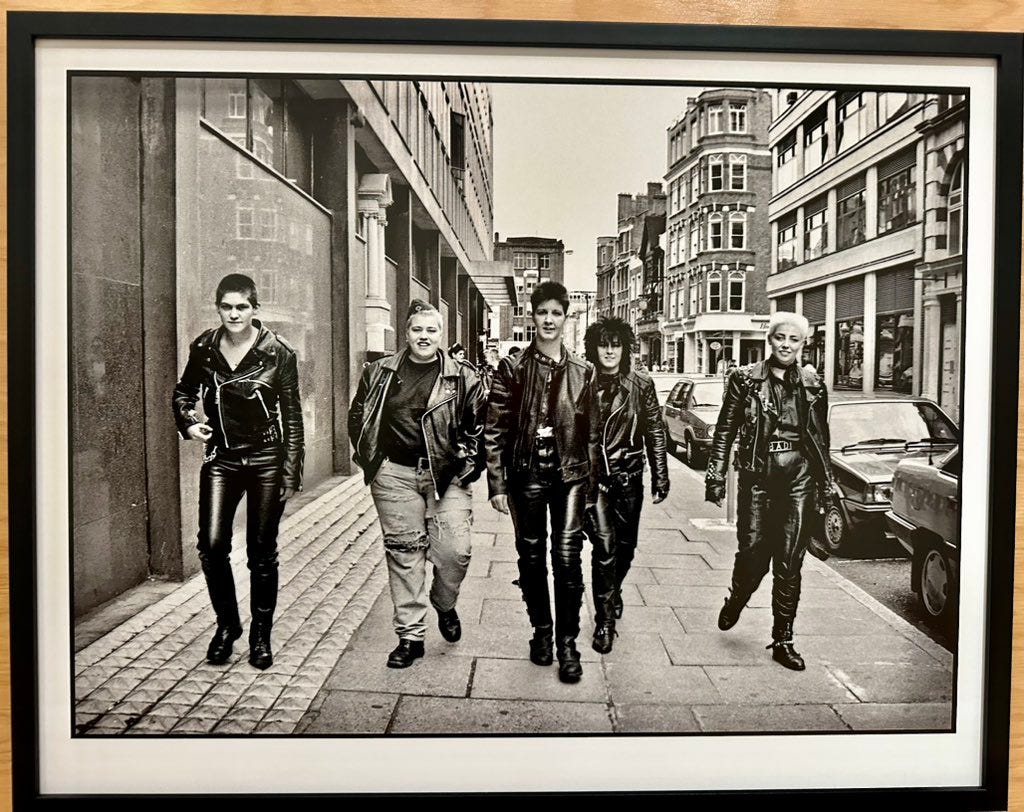




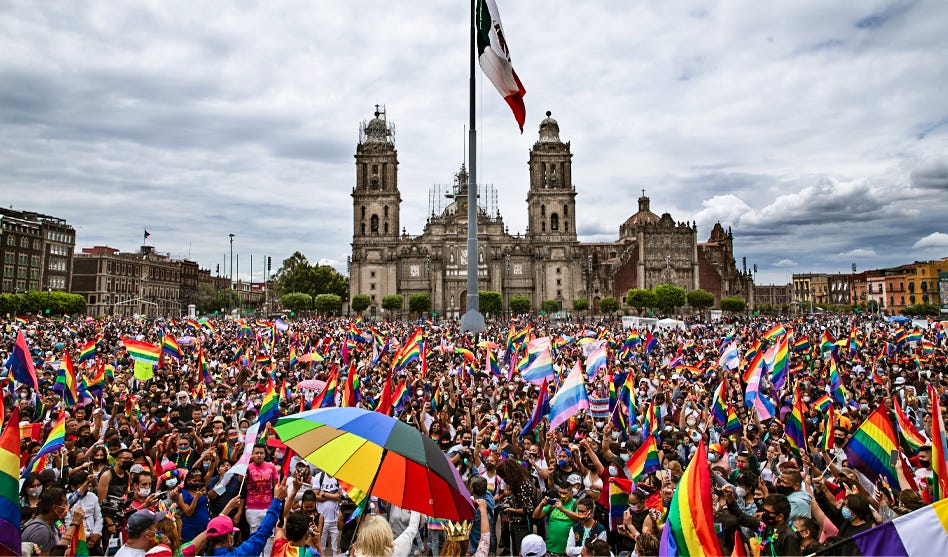



















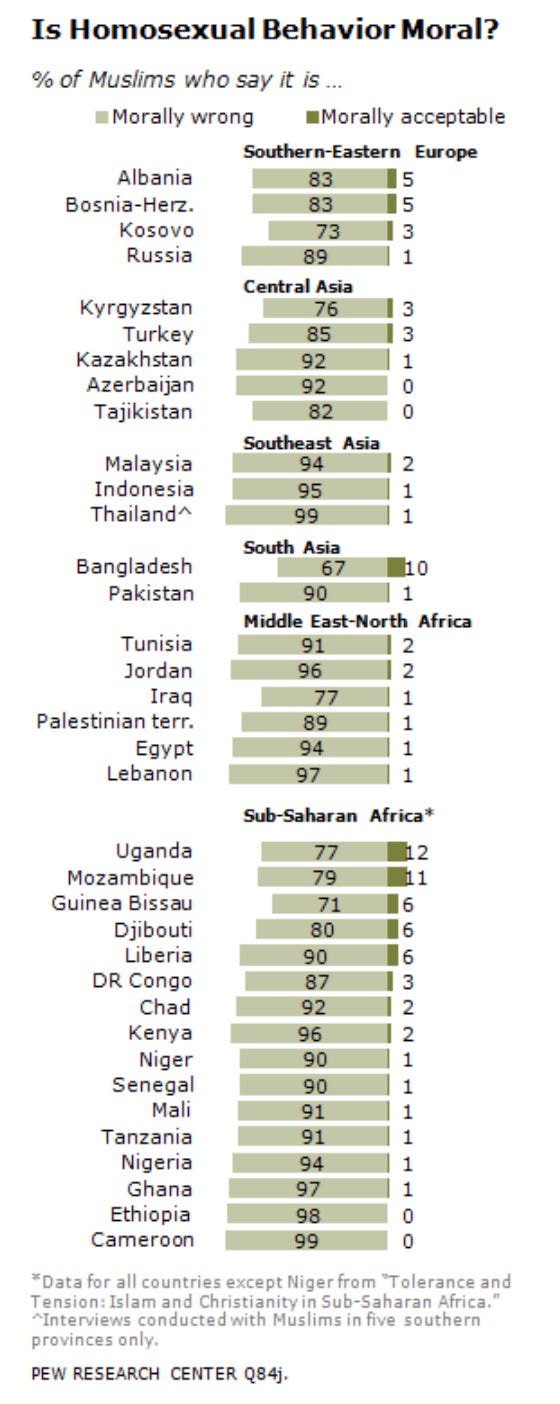








Fascinating as always, Alice.
As we approach Carnival on my Caribbean island, I am also curious about what impact, if any, cultural traditions of cross dressing/dressing to invert social roles for special occasions might have on tolerance for gender role flexibility. Many European (and especially Catholic) influenced cultures have for centuries had a festival like Mardi Gras or Carnival, where there are costumes that are both gender-bending and also invert social roles, like poorer people dressing up as the king/having various frivolous "king" characters who parade through town. In the Caribbean and Latin America, these are especially famous and locally popular--but the Caribbean and Latin America include both gay-friendly locales (again, hooray Saba, my island home) and places that are violently homophobic (looking at you, Jamaica). I'd be interested to know your thoughts on this.
I think one aspect missing from your analysis is the influence of indigenous American cultures both on the Americas and on western Europe (through colonization and contact with indigenous peoples). There were many indigenous peoples that were far, far more libertarian culturally, politically, and sexually than almost anywhere in Eurasia before the 20th century.